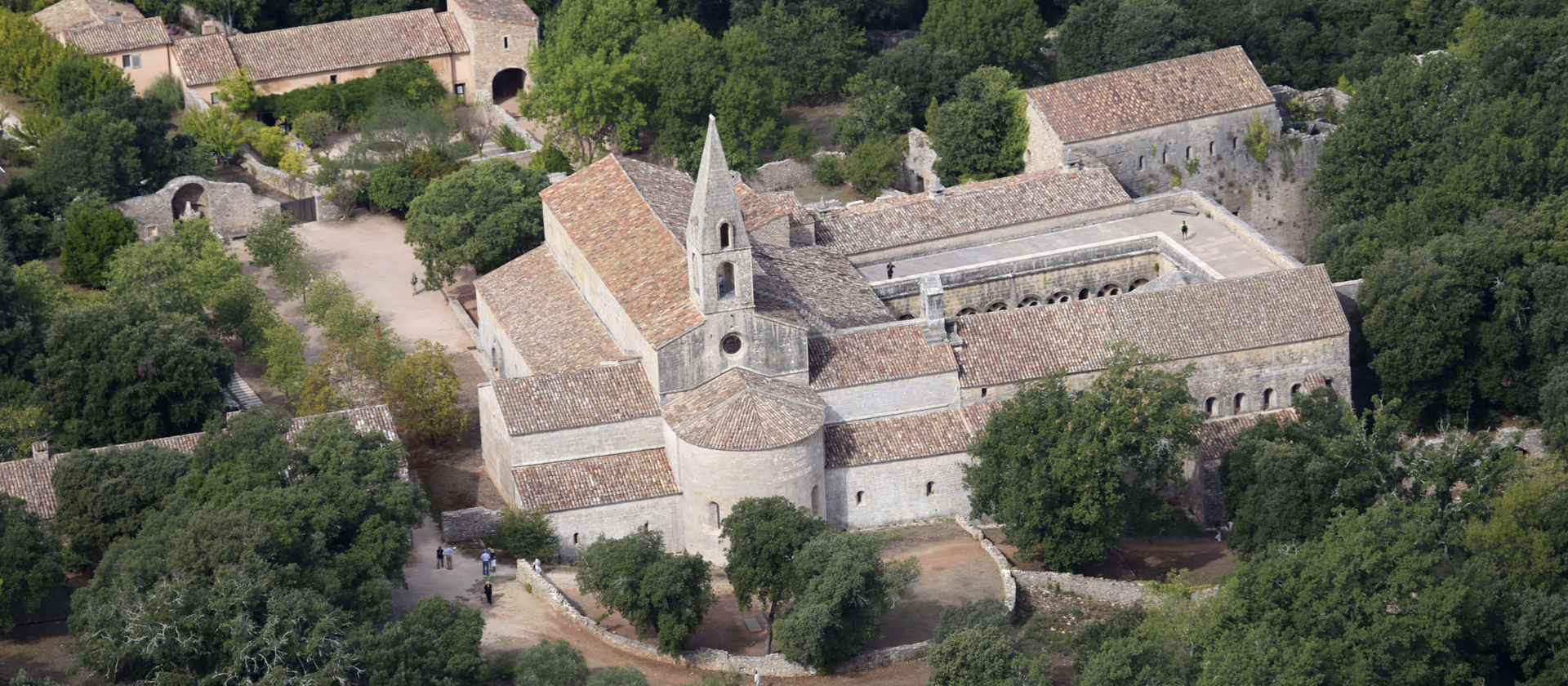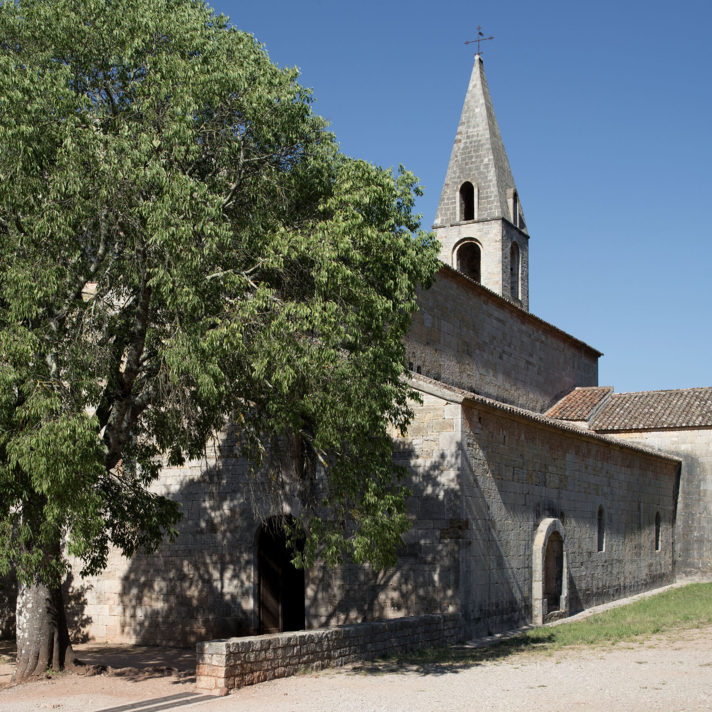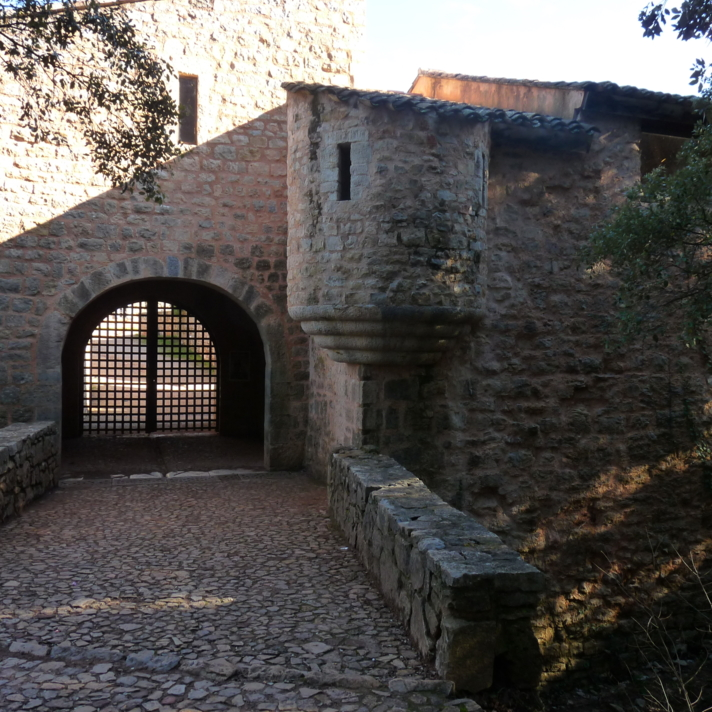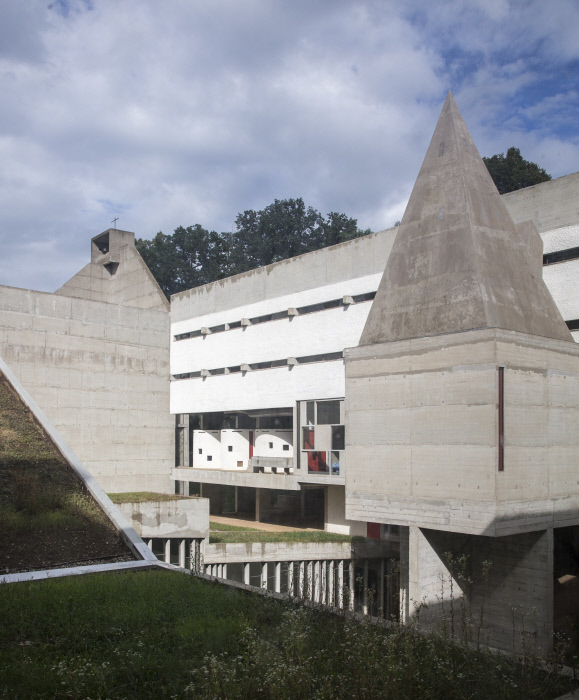History
article | Reading time5 min
History
article | Reading time5 min
Built in the 12th century, Le Thoronet Abbey is considered to be the "marvel" of the Cistercian abbeys of Provence. This monument with its remarkable acoustics has left its mark on generations of architects, including Le Corbusier, Fernand Pouillon, John Pawson and Tadao Ando!
The Abbey of Le Thoronet, founded by monks of the Cîteaux order in the Var hinterland, was built mainly between 1160 and 1190 and completed in 1250. It is a Romanesque architectural ensemble that displays the characteristics of Cistercian architecture, including purity, simplicity and harmonious proportions.
Obeying a rule inspired by the one of Saint Benoît, which imposed a life of prayer and work in a place away from the world, a colony of monks from the Mazan abbey (Ardèche) first built Notre-Dame de Florielle on the Tourtour territory. Access to the site was too difficult, so the monks chose the site of Le Thoronet, which was both secluded at the foot of the Ubac mountains and not far from the Argens valley and the road between Saint-Maximin and Fréjus, the seat of a bishopric. They were sure to benefit from the abundant natural resources of the land they had received from local lords.
The abbey of Thoronet is one of three Cistercian abbeys in Provence, alongside Sénanque and Silvacane.
© Dominique Grandemange / Centre des monuments nationaux
In the 13th century, the abbey was home to around twenty monks and several dozen lay brothers, who were assigned to running the rural estates: the barns (agricultural estates) and the cellars (wine and olive-growing estates). Thanks to donations from the Counts of Provence and wealthy local families, the monks built up a rich land heritage consisting of farmland, pastures and salt pans .
But less than two centuries later, the decline of the abbey had begun. The abbey changed the way it used its properties, which were leased or sold. It was placed under the commendation system in 1430 and the successive abbots, appointed by the King of France rather than elected from among and by the monks of the abbey, received part of its ecclesiastical benefits on a personal basis. Being far away, the commendatory abbots paid little attention to the abbey.
During the Wars of Religion, the monks temporarily abandoned the abbey. In 1660, the prior reported "the great need to repair the buildings of this abbey, which were in a pitiful state".
In 1791, the last six monks left and the abbey was sold as national property to private individuals, who installed stables and barns.
© Ambroise Tézenas / Centre des monuments nationaux
In the 19th century, the abbey benefited from the enthusiasm of scholars, in particular Prosper Mérimée and the architects of historic monuments. It was listed as a historic monument in 1840, and restoration work began on the church in 1841.
From 1854, the State gradually bought the site. The gatehouse was rebuilt in 1939 from the substantial remains found on site, and a reception building was added in the 1990s. Landslides following the opening of an industrial bauxite mine between 1945 and 1990 affected certain buildings such as the tithe barn , which had to be consolidated.
©Nathalie Perrot
Henri Révoil, architect of historic monuments, wrote in 1873:
After many restorations, the abbey has become a monument emblematic of Cistercian art and the Cistercian ideal of life. Many world-famousarchitects have found its architecture a source of inspiration for their creations, including Le Corbusier for the Tourette convent near Lyon, Fernand Pouillon with his apartment blocks on the port of Marseille, and more recently John Pawson, who has developed a minimalist approach to architecture.
Has the history of Le Thoronet Abbey left you thirsting for more knowledge? Then one of our tours or workshops is certainly for you!
© Pascal Lemaître / Centre des monuments nationaux






